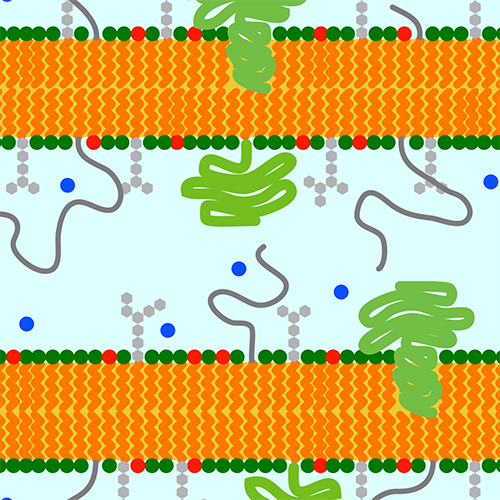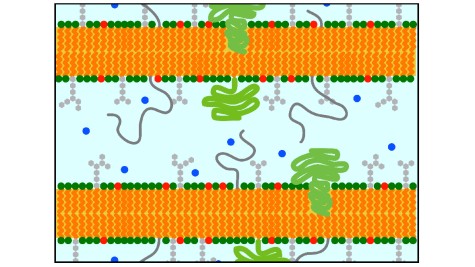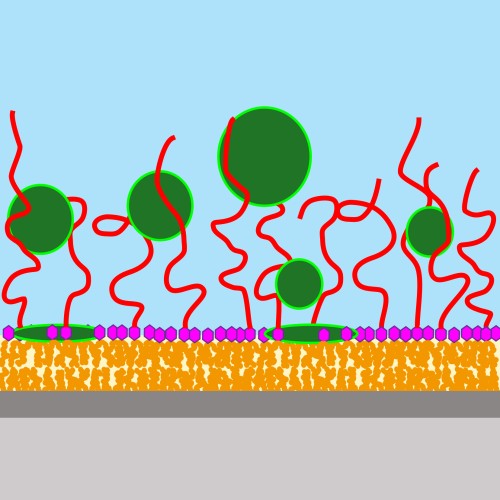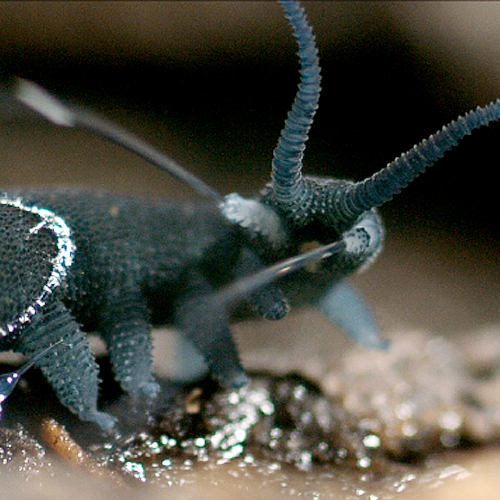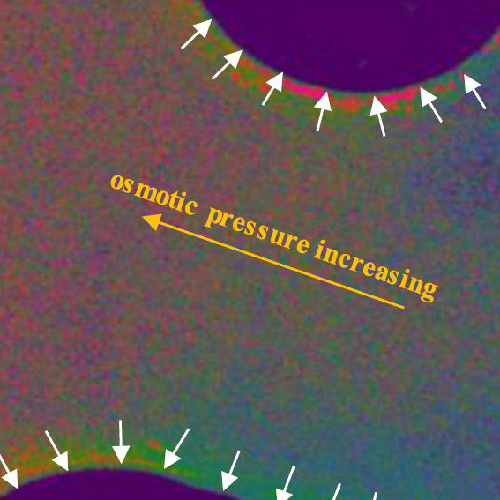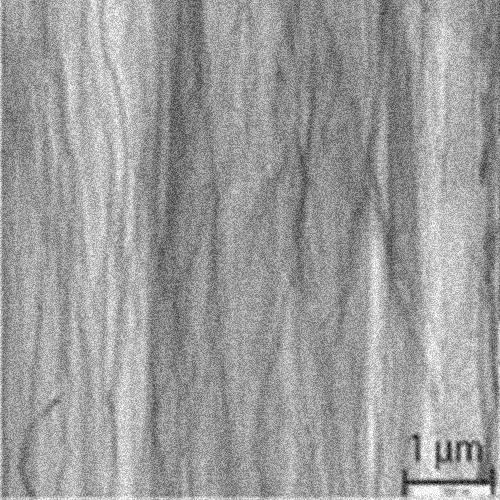At first, with detailed structural insight in terms of molecular conformations and elemental distributions. And secondly, with the help of rigorous solvent-explicit computer simulations precisely accounting for the solvent chemical potential. The ultimate goal is the quantitative understanding and prediction of interfacial forces in biology and soft matter. Of special interest are biomembrane recognition and adhesion processes (see Figure above). Here, the long-term goal is to understand the structural and energetic context in which specific receptor/ligand recognition occurs and membrane adhesion is established or released.
Selected publications:
- V. M. Latza, B. Demé, E. Schneck Membrane adhesion via glycolipids occurs for abundant saccharide chemistries Biophysical Journal, 118, 1602 (2020)
- E. Schneck The Interaction between Soft Interfaces: Forces and Structural Aspects Advanced Materials Interfaces 4, 1600349 (2017)
- E. Schneck, F. Sedlmeier, R. R. Netz Hydration Repulsion between Bio-Membranes Results from an Interplay of Dehydration and Depolarization Proc. Natl. Acad. Sci. USA, 109, 14405 (2012)
- M. Kanduc, A. Schlaich, A. de Vries, B. Demé, J. Jouhet, E. Maréchal, R. R. Netz, E. Schneck Tight Cohesion between Glycolipid Membranes Results from Balanced Water-Headgroup Interactions Nature Communications, 8, 14899 (2017)
- I. Rodriguez-Loureiro, E. Scoppola, L. Bertinetti, A. Barbetta, G. Fragneto, E. Schneck Neutron Reflectometry Yields Distance-Dependent Structures of Nanometric Polymer Brushes Interacting across Water Soft Matter, 13, 5767 (2017)
- I. Rodriguez-Loureiro, V. M. Latza, G. Fragneto, E. Schneck Conformation of Single and Interacting Lipopolysaccharide Surfaces Bearing O-Side Chains Biophysical Journal, 114, 1 (2018)


